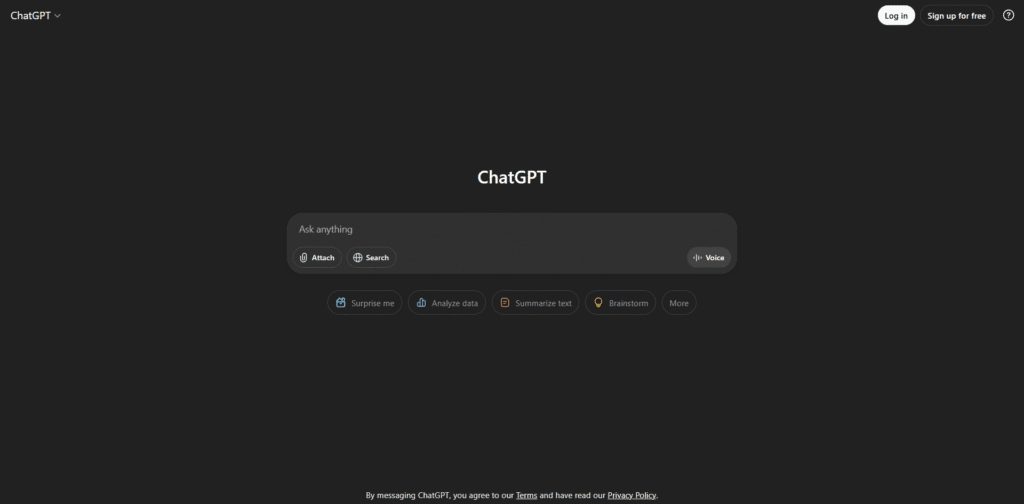Explore the top 10 AI tools for customer engagement that help businesses deliver personalized interactions, improve response times, and build stronger relationships. These tools leverage AI to boost customer satisfaction and loyalty effortlessly.
Customer engagement means connecting with customers in a meaningful way. It helps businesses build trust and keep customers happy. Artificial Intelligence (AI) tools make this easier. They save time, personalize messages, and improve customer experiences. In this blog post, we will share the best AI tools for customer engagement in simple words. These tools are great for beginners and small businesses. Let’s start!
Why Use AI Tools for Customer Engagement?
AI tools help businesses talk to customers better. They do boring tasks, understand customer needs, and make interactions personal. Here are some benefits:
- Save Time: AI answers customer questions or sends emails fast.
- Personalize Experiences: AI makes messages feel special for each customer.
- Understand Customers: AI finds what customers like or dislike.
- Improve Sales: Happy customers buy more and stay loyal.
These tools are perfect for small teams or new businesses. They are easy to use and often have free plans.
To learn more about AI in customer engagement, check this guide to AI for customer service.
Top 10 AI Tools for Customer Engagement
Here are the best AI tools for customer engagement in 2025. Each tool helps with tasks like chatting, emailing, or analyzing feedback.
1. Zendesk AI

Zendesk AI is a customer service tool. It uses AI to answer customer questions and manage support tickets. It works with email, chat, and social media.
Features:
- AI chatbots answer questions 24/7.
- Suggests replies for support agents.
- Analyzes customer feedback for insights.
- Free trial includes AI features.
Why Use It:
Zendesk AI is great for businesses with many customer questions. The chatbot answers simple queries, like “Where is my order?” This saves time for your team. The AI also suggests replies for agents, making responses faster and consistent. It analyzes feedback to show what customers want, helping you improve your product. The tool is easy to set up and works with platforms like Slack. The free trial lets you test it without cost.
Example:
A customer asks about a refund. Zendesk’s AI chatbot explains the process. If it’s complex, the AI passes it to an agent with a suggested reply.
2. Intercom

Intercom is an AI tool for customer messaging. It helps businesses chat with customers on websites or apps.
Features:
- AI chatbot answers questions instantly.
- Sends personalized messages based on user actions.
- Tracks customer behavior for insights.
- Free plan for small teams.
Why Use It:
Intercom makes customer chats personal and fast. The AI chatbot greets visitors on your website and answers basic questions. It uses customer data, like past purchases, to send tailored messages. For example, it can offer a discount to a returning customer. Intercom’s insights show which messages work best, helping you improve engagement. The free plan is great for small businesses starting out.
Example:
A visitor browses your site. Intercom’s AI sends a chat: “Need help finding a product?” The visitor replies, and the AI suggests items.
3. ChatGPT

ChatGPT, by OpenAI, is a versatile AI chatbot. It helps write emails, create scripts, or answer customer queries.
Features:
- Writes personalized emails or messages.
- Creates scripts for customer calls.
- Answers questions in real-time.
- Free plan with basic features.
Why Use It:
ChatGPT is like a writing assistant for customer engagement. You can use it to draft friendly emails or social media replies. It saves hours by creating messages that feel personal. For example, ask it to write a thank-you email to a customer. It’s also great for brainstorming campaign ideas or answering FAQs. The free plan is powerful and easy for beginners to use.
Example:
You need a reply for a customer complaint. Ask ChatGPT: “Write a polite apology email.” It gives a draft you can tweak and send.
4. HubSpot Free CRM

HubSpot’s free CRM uses AI to manage customer relationships. It helps track interactions and send personalized messages.
Features:
- Tracks customer emails and calls.
- AI suggests the best time to contact customers.
- Sends automated emails.
- Free plan includes AI tools.
Why Use It:
HubSpot helps you stay organized. The AI tracks customer interactions, like emails or website visits, and suggests when to follow up. This ensures you don’t miss opportunities. It also sends automated emails, like welcome messages, that feel personal. HubSpot is simple and great for small businesses. The free plan covers basic needs and grows with your team.
Example:
A customer visits your site. HubSpot’s AI suggests sending a follow-up email. You use the tool to send a discount code, and they buy.
5. ManyChat

ManyChat is an AI tool for chatbots on social media, like Instagram or WhatsApp. It automates customer chats.
Features:
- Builds chatbots for social media.
- AI personalizes replies based on user data.
- Integrates with e-commerce platforms.
- Free plan for small businesses.
Why Use It:
ManyChat is perfect for businesses active on social media. The AI creates chatbots that answer customer questions on platforms like Instagram. It uses customer data to make replies personal, like suggesting products based on past chats. It’s easy to set up with no coding needed. The free plan works for small businesses with limited budgets.
Example:
A customer messages your Instagram shop. ManyChat’s AI replies with product details and a discount code, leading to a sale.
6. Grammarly
Grammarly is an AI writing tool. It checks grammar, tone, and clarity in emails or messages for customers.
Features:
- Fixes spelling and grammar errors.
- Suggests better words for clarity.
- Checks tone to sound friendly.
- Free plan works for emails.
Why Use It:
Grammarly makes your messages professional. It fixes mistakes and ensures your emails sound clear and friendly. This builds trust with customers. For example, a poorly written email can confuse customers, but Grammarly makes it polished. It’s easy to use and works with email apps like Gmail. The free plan is enough for daily customer communication.
Example:
You write a customer email. Grammarly suggests changing “buy now” to “explore our products” for a friendlier tone. The customer responds positively.
7. Drift
Drift is an AI conversational tool for websites. It helps engage customers through live chat and chatbots.
Features:
- AI chatbot answers questions 24/7.
- Qualifies leads for sales teams.
- Personalizes chats based on user data.
- Free plan for basic chat features.
Why Use It:
Drift keeps customers engaged on your website. The AI chatbot starts conversations, like asking if they need help. It qualifies leads by asking questions, saving time for your sales team. Drift’s AI uses visitor data to make chats personal, like mentioning their recent page views. The free plan is great for small businesses wanting to improve website engagement.
Example:
A visitor checks your pricing page. Drift’s AI chats: “Interested in our plans?” It answers their questions and passes the lead to sales.
8. Sprout Social
Sprout Social is an AI tool for social media engagement. It helps manage comments, messages, and posts.
Features:
- AI suggests replies to comments.
- Analyzes social media engagement.
- Schedules posts for best times.
- Free trial for testing AI features.
Why Use It:
Sprout Social helps businesses stay active on social media. The AI suggests quick replies to customer comments, saving time. It analyzes which posts get the most likes or shares, helping you create better content. The tool is easy to use and works with platforms like Twitter and Instagram. The free trial lets you test AI centric AI for better customer engagement. It’s perfect for businesses wanting to connect with customers online.
Example:
A customer comments on your Instagram post. Sprout’s AI suggests a polite reply. You post it, and the customer feels valued.
9. Hootsuite
Hootsuite is an AI social media tool. It helps manage posts and engage with customers on platforms like Facebook.
Features:
- AI schedules posts for high engagement.
- Suggests replies to customer messages.
- Tracks social media performance.
- Free plan for limited accounts.
Why Use It:
Hootsuite makes social media engagement easy. The AI finds the best times to post for maximum likes and comments. It suggests replies to customer messages, keeping interactions fast and friendly. Hootsuite’s analytics show which posts work best, helping you improve. The free plan is great for small businesses with a few social accounts.
Example:
A customer asks about a product on Twitter. Hootsuite’s AI suggests a reply with product details. You respond quickly, and they buy.
10. Tidio
Tidio is an AI chatbot for websites and e-commerce. It automates customer chats and collects leads.
Features:
- AI chatbot answers FAQs.
- Collects customer emails for follow-ups.
- Integrates with Shopify and WordPress.
- Free plan for small businesses.
Why Use It:
Tidio helps businesses engage customers instantly. The AI chatbot answers common questions, like shipping details, 24/7. It collects emails for future marketing, helping you grow sales. Tidio is easy to set up and works with online stores. The free plan is perfect for small businesses starting out.
Example:
A customer asks about delivery times. Tidio’s AI replies instantly. The customer is happy and completes their purchase.
How to Choose the Right AI Tool
With many tools, picking the right one is key. Here are tips to choose:
- Know Your Needs: Need chatbots? Try Intercom or Tidio. Need social media help? Use Sprout Social.
- Check Integration: Ensure the tool works with your website or CRM.
- Test Free Plans: Try free versions to see what fits.
- Ease of Use: Pick tools with simple interfaces.
- Check Limits: Free plans may limit chats or posts.
Example
If you need website chats, use Drift or Tidio. For social media, try Hootsuite or Sprout Social. Combine tools for better results.
Benefits of AI Tools for Customer Engagement
AI tools help in many ways:
| Benefit | How It Helps |
|---|---|
| Save Time | Automates replies and scheduling. |
| Personalized Chats | Makes messages feel special for each customer. |
| Better Insights | Analyzes feedback to improve engagement. |
| More Sales | Happy customers buy more and stay loyal. |
Example
A business uses Intercom’s AI chatbot. It answers questions instantly, and customers buy more because they feel valued.
Challenges of AI Tools
AI tools have limits:
- Limited Features: Free plans may restrict chats or analytics.
- Learning Curve: Tools like HubSpot need time to learn.
- Data Privacy: Check if tools protect customer data.
- Generic Replies: AI messages may need editing to feel human.
Read privacy policies and test tools to avoid issues.
How to Use AI Tools Effectively
To get the best results, follow these tips:
- Start Small: Try one tool, like ChatGPT for emails.
- Customize Replies: Edit AI messages to match your brand.
- Track Results: Check if tools increase replies or sales.
- Learn More: Watch tutorials for each tool.
- Combine Tools: Use Grammarly for emails and Tidio for chats.
Real-Life Examples
Here are examples of how these tools help:
Example 1: Small Business
Lisa runs an online store. She uses Tidio’s AI chatbot to answer FAQs. Customers get quick replies and buy more.
Example 2: Freelancer
Mark manages social media for clients. He uses Hootsuite’s AI to schedule posts. His clients get more engagement.
Example 3: Big Team
A company uses Zendesk AI for support. The chatbot handles simple queries, and agents focus on complex issues. Customer satisfaction rises.
Future of AI in Customer Engagement
AI is growing. Future tools will:
- Be more personal, like customizing replies for each customer.
- Work better with CRMs and apps.
- Give smarter insights, like predicting customer needs.
- Be easier for beginners.
Start using these tools now to stay ahead. Don’t forget to check out the latest AI Tools on our website
Conclusion
AI tools for customer engagement make work easier and customers happier. Tools like Zendesk, Intercom, and ChatGPT save time and personalize interactions. They are simple, even for beginners. Free plans or trials let you test them without cost. Start with one tool, like Tidio for chats or Grammarly for emails. Combine tools for better results. These tools help you connect with customers and grow your business. Try them today!
FAQs About AI Tools for Customer Engagement
- What are AI tools for customer engagement?
They use AI to automate chats, emails, or social media for better customer connections. - Are these tools free?
Many have free plans or trials, like HubSpot or Intercom. - Which tool is best for website chats?
Drift and Tidio are great for website chatbots. - Do I need tech skills?
No, most tools are simple and beginner-friendly. - What are free plan limits?
Limits include fewer chats or posts, like in ManyChat or Tidio. - Can I use multiple tools?
Yes, combine tools like Grammarly and Hootsuite for better results. - Are AI tools safe?
Most are safe, but check privacy policies for data protection.







